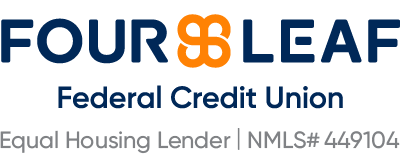Fixed-Rate HELOC Pros and Cons
Fixed-rate home equity lines of credit are a way to tap your home’s equity while giving you predictable payments.

Some or all of the mortgage lenders featured on our site are advertising partners of NerdWallet, but this does not influence our evaluations, lender star ratings or the order in which lenders are listed on the page. Our opinions are our own. Here is a list of our partners.
A typical home equity line of credit tends to have a variable rate that changes based on market conditions. However, some lenders allow you to lock in a fixed APR, meaning that you'll continue to pay the same rate for each fixed withdrawal. Fixed-rate and variable-rate HELOCs each have their own advantages, so compare lender options before deciding.
HELOC & Home Equity Loans from our partners

on New American Funding
580
$750,000
on New American Funding

on FourLeaf Federal Credit Union
670
$1,000,000
on FourLeaf Federal Credit Union
Fixed rates vs. variable rates
A typical HELOC has an introductory rate that increases or decreases based on market conditions. As these loans can last for decades, it’s difficult to predict how your rate will change. Lenders have ceilings for APR (usually around 18%), but it’s unlikely you’ll ever pay the maximum.
Still, some people are uncomfortable with this level of uncertainty. Fixed-rate HELOCs allow you to lock in some or all of your loan at a specific APR, giving you predictable payments. If you choose to freeze the APR for part of the loan only, the rate will vary for subsequent draws.
Lenders each have their own guidelines around fixed-rate HELOCs, so it’s important to read the fine print. Bank of America, for instance, requires a minimum outstanding balance of $5,000 to convert from a variable rate to a fixed one. You also may be limited in the number of times you can choose a fixed-rate option. For example, Truist allows for a maximum of five open fixed-rate withdrawals at a time.

Pros of getting a fixed-rate HELOC
For risk-averse borrowers exploring HELOC options, there are benefits to selecting a fixed rate that are worth considering.
Fixed-rate HELOCs safeguard your loan from rising interest rates. This can save you money in the long run if interest rates go up.
You know exactly what you’ll be paying, making long-term financial planning easier.
Some lenders allow you to revert to a variable rate if rates go down, so locking your APR doesn’t necessarily mean gambling on a rate increase.
Cons of getting a fixed-rate HELOC
Borrowers who want to maximize lender options and avoid high introductory costs may opt for a variable rate instead.
Fixed-rate options could have a higher initial APR than variable-rate HELOCs. If you think that you’ll be paying off your HELOC quickly, the risk mitigation offered by a fixed rate may not be worth this pricier fee.
You’re limited in your lender selection, since not all HELOC lenders offer a fixed-rate option.
You may be limited in the number of times that you can lock a rate.
» MORE: Good reasons to get a HELOC
How to get a fixed-rate HELOC
Fixed-rate options are a unique feature that not every HELOC lender will offer. Out of nearly 30 lenders surveyed by NerdWallet, 20 confirmed that consumers could lock in their loan at a fixed rate. If a fixed-rate HELOC is something that you want (or may want), you should ask about it when getting quotes from potential lenders. NerdWallet’s roundup of the best HELOC lenders is a good place to start your search. It notes which lenders offer a fixed-rate option.
Once you get a HELOC, the window to withdraw from your equity (known as the draw period) usually lasts around 10 years. The repayment period varies depending on the lender and the terms of your loan, but it can be as long as 20 or even 30 years.
Consider a home equity loan
When comparing lenders that offer fixed-rate HELOCs, you might also want to consider a home equity loan. Home equity loans are offered at a fixed rate and, like HELOCs, are tools for accessing the equity in your home. However, unlike a HELOC that allows you to draw as much as you need over time, you receive the funds as one lump sum. So if you choose to explore home equity loans, you’ll need to know exactly how much you need to borrow upfront.


